The global lithium battery charger market, valued at USD 1.15 billion in 2024, is set to grow at a CAGR of 2.91% through 2027, driven by the increasing adoption of electric vehicles and advancements in battery technology.
Table of Contents:
Lithium Battery Chargers: A Market Overview
Detailed Analysis of the Lithium Battery Charger Market
Key Factors When Selecting Lithium Battery Chargers
Innovations in Lithium Battery Charger Technology
Consumer Preferences and Market Trends
Wrapping Up
Lithium Battery Chargers: A Market Overview
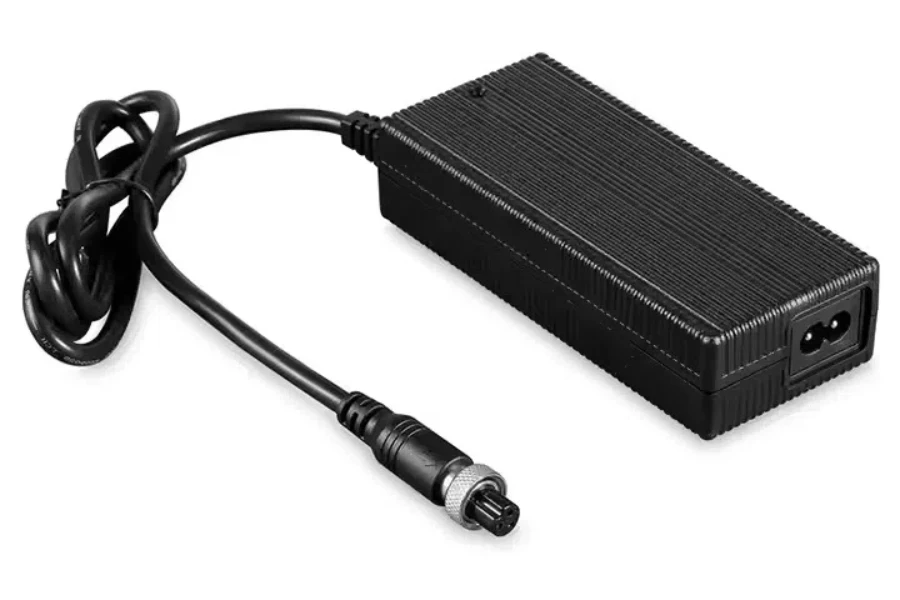
The global lithium battery charger market is experiencing significant growth, driven by the rising demand for electric vehicles (EVs) and advancements in battery technology. As of 2024, the market is valued at approximately USD 1.15 billion and is projected to grow at a compound annual growth rate (CAGR) of 2.91% through 2027. This growth is largely due to the increasing adoption of EVs, spurred by environmental concerns and government incentives promoting zero-emission vehicles.
Lithium battery chargers are crucial for maintaining the efficiency and longevity of lithium-ion batteries, which are widely used in EVs, consumer electronics, and renewable energy storage systems. The market is segmented by product category, type, and end use, with the non-premium low voltage charger segment holding the largest market share. However, the premium low voltage charger segment is expected to grow significantly, driven by the increasing demand for fleet vehicle businesses and advancements in charging technologies.
Geographically, Europe holds the largest share of the lithium battery charger market, primarily due to the rising adoption of EVs and stringent CO2 emission standards. Germany, in particular, is a key market, driven by the high demand for EVs and substantial investments in battery production and charging infrastructure. North America and the Asia Pacific regions are also witnessing considerable growth, with the United States and China leading the market due to their large consumer bases and supportive government policies.
Detailed Analysis of the Lithium Battery Charger Market
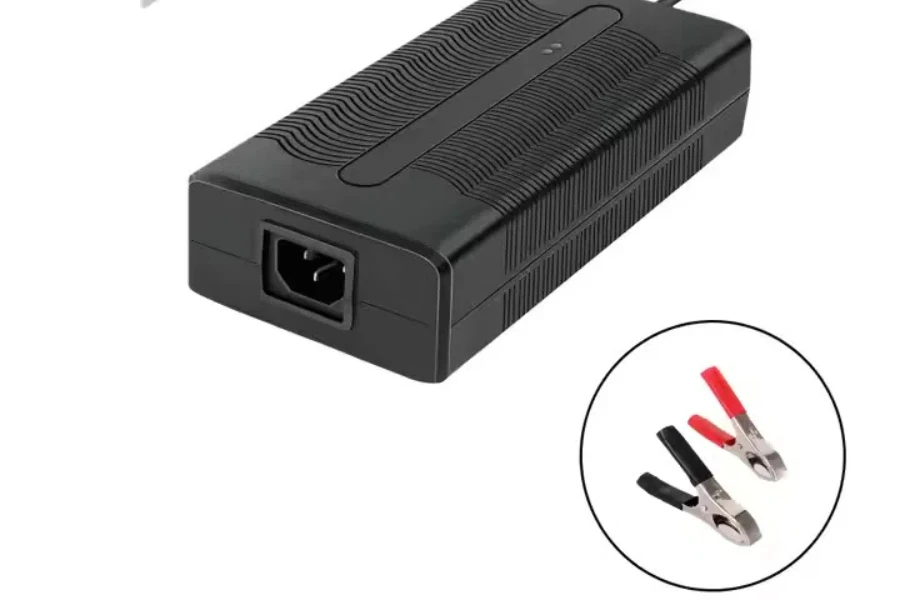
Key Performance Benchmarks and Market Share Dynamics
The performance benchmarks for lithium battery chargers include efficiency, charging speed, and compatibility with various battery chemistries. The market is dominated by key players such as Tesla, Inc., ABB Group, Siemens AG, and Robert Bosch GmbH, who are continuously innovating to improve charger efficiency and reduce charging times. Market share dynamics are influenced by technological advancements, consumer preferences, and regulatory frameworks promoting sustainable transportation solutions.
Economic Influences and Consumer Behavior Shifts
Economic factors such as the declining cost of lithium-ion batteries and increasing investments in renewable energy projects are driving the growth of the lithium battery charger market. The average cost of lithium-ion battery systems has decreased significantly, encouraging the adoption of EVs and other battery-powered devices. Consumer behavior is also shifting towards environmentally friendly products, with a growing preference for electric vehicles and renewable energy solutions.
Seasonal Demand Patterns and Distribution Channel Preferences
The demand for lithium battery chargers shows seasonal patterns, with higher sales during periods of increased EV purchases and renewable energy installations. Distribution channels for lithium battery chargers include direct sales to OEMs (Original Equipment Manufacturers), online retail platforms, and specialized electronic stores. OEMs dominate the distribution channels, as they integrate chargers into their EV models, ensuring compatibility and optimal performance.
Recent Innovations and Product Lifecycle Stages
Recent innovations in the lithium battery charger market include the development of ultra-fast chargers and wireless charging solutions. These advancements aim to reduce charging times and enhance user convenience. The product lifecycle stages of lithium battery chargers involve design, manufacturing, distribution, usage, and disposal. Continuous advancements in charger technology and battery chemistry are extending the lifecycle of chargers, making them more durable and efficient.
Digitalization and Environmental Regulations
Digitalization is playing a crucial role in the lithium battery charger market, with smart chargers equipped with IoT (Internet of Things) capabilities becoming increasingly popular. These smart chargers offer features such as remote monitoring, automated charging schedules, and integration with renewable energy sources. Environmental regulations aimed at reducing carbon emissions and promoting sustainable energy solutions are also driving the adoption of lithium battery chargers. Compliance with these regulations is essential for market players to remain competitive and meet consumer expectations.
Customer Pain Points and Brand Positioning Strategies
Common customer pain points in the lithium battery charger market include long charging times, compatibility issues, and the high cost of premium chargers. To address these concerns, manufacturers are focusing on developing fast chargers, universal charging solutions, and cost-effective models. Brand positioning strategies involve highlighting the efficiency, reliability, and eco-friendliness of their products to attract environmentally conscious consumers and differentiate themselves from competitors.
Differentiation Strategies and Niche Markets
Differentiation strategies in the lithium battery charger market include offering innovative features such as bidirectional charging, energy optimization, and enhanced safety mechanisms. Companies are also targeting niche markets such as the luxury EV segment, recreational vehicles (RVs), and portable energy storage systems. By catering to specific customer needs and preferences, manufacturers can capture a larger market share and establish a strong brand presence.
Key Factors When Selecting Lithium Battery Chargers
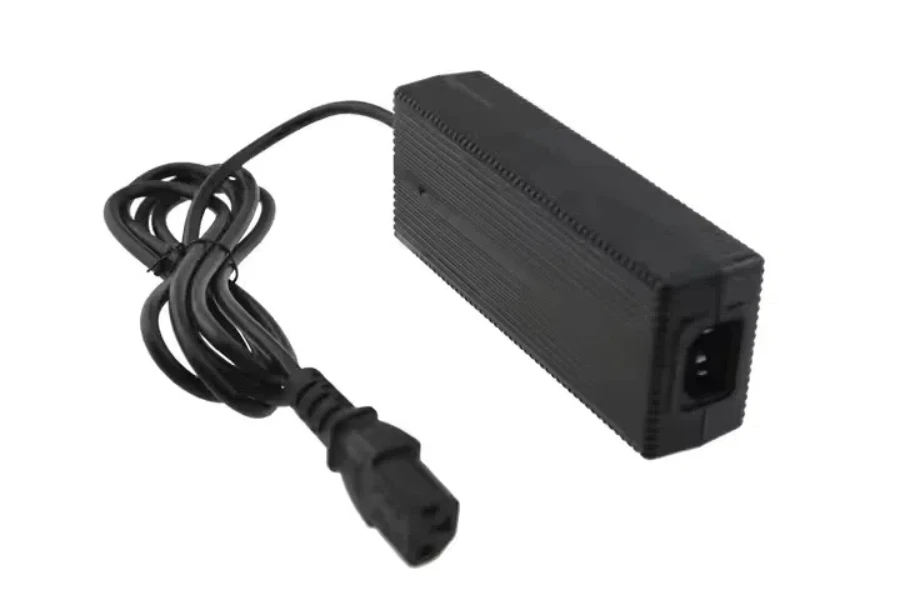
When selecting a lithium battery charger for consumer electronics, several key factors must be considered to ensure optimal performance, safety, and compatibility. Below are detailed discussions on these factors.
Types and Styles of Lithium Battery Chargers
The market offers various types and styles of lithium battery chargers, each designed to meet specific needs.
Desktop Chargers: These chargers are typically used in a stationary setup, such as on a desk or workbench. They often feature multiple charging slots and can charge several batteries simultaneously, making them ideal for professional use or for charging multiple devices at home.
Portable Chargers: Designed for mobility, portable chargers are compact and lightweight, making them convenient for travel. They usually come with built-in batteries that allow users to charge their devices on the go without needing an external power source.
Integrated Chargers: These are built into the devices they charge, such as laptops or electric vehicles. Integrated chargers are designed to be highly efficient and are optimized for the specific battery and device they serve.
Each type of charger has its own advantages and is suited for different use cases. For instance, desktop chargers are perfect for heavy users who need to charge multiple batteries at once, while portable chargers are ideal for users who need to charge their devices on the move.
Performance and Functionality
Performance and functionality are critical when selecting a lithium battery charger.
Charging Speed: Fast charging capabilities are essential for users who need to quickly recharge their batteries. Chargers with higher wattage can deliver faster charging times. For example, chargers supporting up to 100W can significantly reduce charging times for high-capacity batteries.
Efficiency: High-efficiency chargers minimize energy loss during the charging process, ensuring that more power is delivered to the battery. This not only reduces charging time but also improves the overall energy efficiency of the device.
Smart Charging Features: Modern chargers often come with smart features such as automatic detection of battery type and capacity, adaptive charging speeds, and real-time monitoring of battery health. These features enhance the user experience by providing safe and efficient charging.
Investing in a high-performance charger with advanced functionality can lead to significant time savings and improved battery longevity.
Safety Standards and Certifications
Safety is a paramount concern when dealing with lithium battery chargers due to the potential risks associated with lithium batteries.
Certifications: Look for chargers that have been certified by recognized safety standards organizations such as UL, CE, FCC, or RoHS. These certifications ensure that the charger meets stringent safety and environmental standards.
Protection Features: Quality chargers should include built-in protection features such as overcharge protection, short-circuit protection, over-temperature protection, and reverse polarity protection. These features prevent damage to the battery and charger, reducing the risk of accidents.
Build Quality: Chargers made from high-quality materials are generally more durable and reliable. Features such as fire-resistant enclosures and robust internal components contribute to the overall safety and longevity of the charger.
Choosing a charger that adheres to high safety standards and has comprehensive protection features is crucial for ensuring safe and trouble-free operation.
Compatibility with Other Devices and Systems
Compatibility with a wide range of devices and systems is another important consideration.
Universal Compatibility: Chargers that support multiple battery types and sizes offer greater flexibility. For example, chargers that can handle both lithium-ion (Li-ion) and lithium-polymer (Li-Po) batteries are versatile and can be used with a variety of devices.
Connector Types: Ensure the charger comes with the appropriate connectors or adapters for your devices. Common connectors include USB-C, Micro-USB, and proprietary connectors for specific devices.
Firmware Updates: Some advanced chargers offer firmware updates to improve compatibility with new devices or to add new features. This ensures the charger remains useful even as technology evolves.
A charger with broad compatibility is a valuable investment, as it can be used with a wide range of current and future devices.
Price Range and Budget
Price is always a consideration, but it should be balanced with the features and quality of the charger.
Budget Options: There are many affordable chargers on the market that offer basic functionality and safety features. These are suitable for users with limited charging needs or those on a tight budget.
Mid-Range Chargers: These typically offer a good balance of performance, features, and price. They often include smart charging features and enhanced safety protections, making them a good choice for most users.
Premium Chargers: High-end chargers come with advanced features such as ultra-fast charging, extensive compatibility, and superior build quality. They are ideal for users who demand the best performance and are willing to invest in a top-quality product.
When selecting a charger, consider your specific needs and budget to find the best option that offers the desired features and performance.
Innovations in Lithium Battery Charger Technology
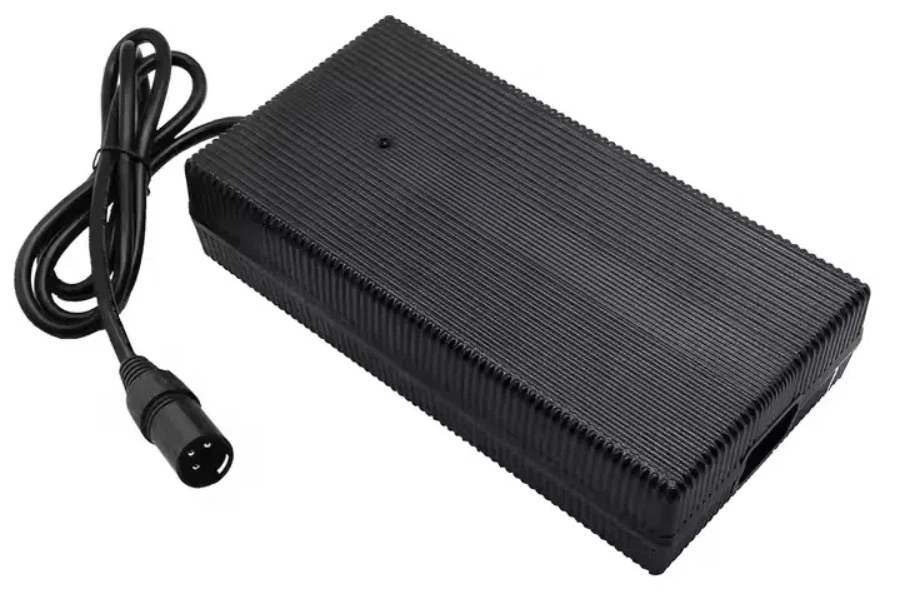
The lithium battery charger market continues to evolve with new technologies and innovations aimed at improving efficiency, safety, and user experience.
Solid-State Batteries and Their Impact on Chargers
Solid-state batteries are an emerging technology that promises higher energy density and improved safety over traditional lithium-ion batteries. These batteries use a solid electrolyte instead of a liquid one, reducing the risk of leaks and thermal runaway.
Chargers designed for solid-state batteries need to accommodate higher energy densities and potentially different charging profiles. As solid-state batteries become more prevalent, charger manufacturers will need to adapt their designs to support these new battery types.
AI-Powered Charging Systems
Artificial Intelligence (AI) is being integrated into charging systems to optimize charging processes.
Smart Charging Algorithms: AI-powered chargers can analyze battery health and usage patterns to optimize charging cycles, extending battery life and improving efficiency.
Predictive Maintenance: AI can also be used to predict when a battery may fail or require maintenance, allowing for proactive management and reducing downtime.
AI-powered charging systems represent the future of battery management, offering smarter and more efficient charging solutions.
Wireless Charging Advancements
Wireless charging technology continues to improve, offering greater convenience and efficiency.
Qi Standard Improvements: The Qi wireless charging standard has seen advancements in efficiency and power delivery, allowing for faster wireless charging.
Long-Range Wireless Charging: Emerging technologies are exploring the possibility of long-range wireless charging, which could allow devices to charge without being placed directly on a charging pad.
As wireless charging technology evolves, it will become an increasingly viable option for a wider range of devices and applications.
Consumer Preferences and Market Trends
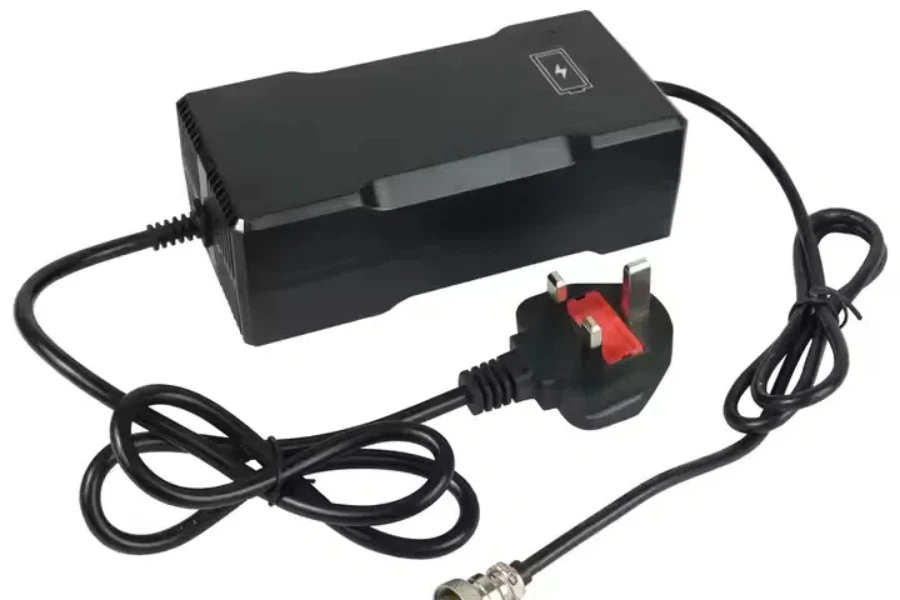
Understanding consumer preferences and market trends can help businesses make informed decisions when selecting and stocking lithium battery chargers.
Growing Demand for Fast Charging
Consumers increasingly demand fast charging solutions to minimize downtime and keep their devices powered.
High-Wattage Chargers: Chargers that support high wattages, such as 100W or more, are becoming more popular as they can significantly reduce charging times.
Quick Charge Compatibility: Consumers look for chargers compatible with fast charging standards like Qualcomm Quick Charge and USB Power Delivery (PD).
Meeting this demand requires stocking chargers that offer fast charging capabilities and broad compatibility with fast charging standards.
Sustainability and Eco-Friendly Options
Sustainability is a growing concern among consumers, influencing their purchasing decisions.
Eco-Friendly Materials: Chargers made from recyclable materials or those with eco-friendly certifications appeal to environmentally conscious consumers.
Energy Efficiency: Consumers prefer chargers that are energy-efficient and have low standby power consumption, reducing their overall environmental impact.
Offering eco-friendly and energy-efficient chargers can attract environmentally conscious consumers and differentiate products in a competitive market.
Integration with Smart Home Systems
The integration of chargers with smart home systems is an emerging trend.
Smart Plugs and Outlets: Chargers that can be controlled via smart plugs or integrated with home automation systems provide added convenience.
Voice Control: Compatibility with voice assistants like Amazon Alexa or Google Assistant allows users to control charging with voice commands.
Stocking chargers that integrate with smart home systems can appeal to tech-savvy consumers looking for seamless and convenient charging solutions.
Wrapping Up
In conclusion, selecting the right lithium battery charger involves considering various factors such as types, performance, safety, compatibility, and price. Staying informed about technological advancements and market trends can help in making the best purchasing decisions.





 Afrikaans
Afrikaans አማርኛ
አማርኛ العربية
العربية বাংলা
বাংলা Nederlands
Nederlands English
English Français
Français Deutsch
Deutsch हिन्दी
हिन्दी Bahasa Indonesia
Bahasa Indonesia Italiano
Italiano 日本語
日本語 한국어
한국어 Bahasa Melayu
Bahasa Melayu മലയാളം
മലയാളം پښتو
پښتو فارسی
فارسی Polski
Polski Português
Português Русский
Русский Español
Español Kiswahili
Kiswahili ไทย
ไทย Türkçe
Türkçe اردو
اردو Tiếng Việt
Tiếng Việt isiXhosa
isiXhosa Zulu
Zulu